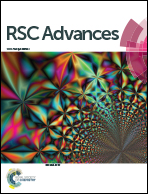N-type and p-type molecular doping on monolayer MoS2†
Abstract
Monolayer MoS2 has attracted much attention due to its high on/off current ratio, transparency, and suitability for optoelectronic devices. Surface doping by molecular adsorption has proven to be an effective method to facilitate the usage of MoS2. However, there are no works available to systematically clarify the effects of the adsorption of F4TCNQ, PTCDA, and tetracene on the electronic and optical properties of the material. Therefore, this work elucidated the problem by using density functional theory calculations. We found that the adsorption of F4TCNQ and PTCDA turns MoS2 into a p-type semiconductor, while the tetracene converts MoS2 into an n-type semiconductor. The occurrence of a new energy level in the conduction band for F4TCNQ and PTCDA and the valence band for tetracene reduces the bandgap of the monolayer MoS2. Besides, the MoS2/F4TCNQ and MoS2/PTCDA systems exhibit an auxiliary optical peak at the long wavelengths of 950 and 850 nm, respectively. Contrastingly, the MoS2/tetracene modifies the optical spectrum of the monolayer MoS2 only in the ultraviolet region. The findings are in good agreement with the experiments.



 Please wait while we load your content...
Please wait while we load your content...